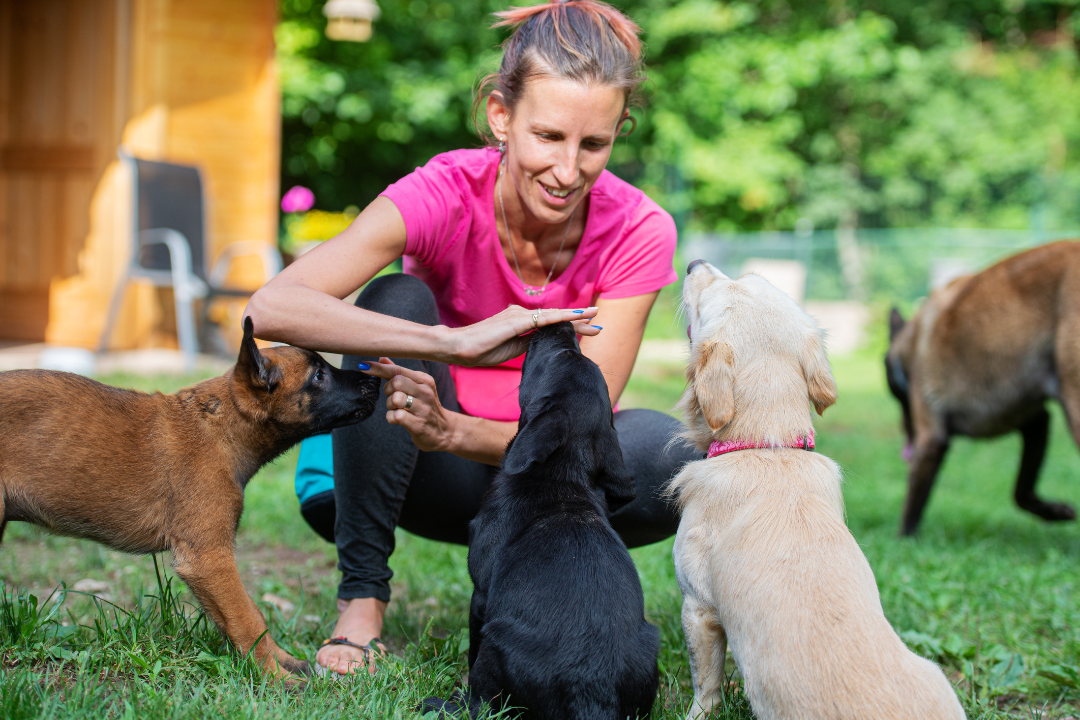How to Train a Puppy to Sit and Stay! (at what age)
Welcome, dear dog lover! Understanding the art of puppy training is essential for every pet parent. After all, the 'Sit' and 'Stay' commands form the basic foundation of any successful dog training program, shaping an obedient and happier companion.
Understanding Your Puppy
Understanding your furry friend’s behavior is a crucial first step. Puppies are not just miniature dogs - they are individuals, with unique needs, and they require a special blend of love, patience, and training to grow into well-mannered adult dogs.
The training you provide during these developmental stages leaves a lasting impact on their overall behavior. Knowing these stages and tailoring your training accordingly is vital for their learning progress.
Preparing for Training
Proper preparation sets the stage for effective training. This involves creating a conducive environment and equipping yourself with recommended puppy training tools like clickers, treat pouches, and an assortment of healthy treats.
Remember, patience and consistency are your two biggest allies in puppy training. Maintain a calm, positive demeanor and reward your pup for small wins - this goes a long way in encouraging good behavior.
Teaching Your Puppy to Sit
The 'Sit' command is a simple yet powerful tool in your training arsenal. It acts as the starting point for other commands, making it invaluable for any puppy parent. Here's a step-by-step guide to teaching the 'Sit' command:
Hold a treat close to your puppy’s nose.
Move your hand up, allowing their head to follow the treat and causing their bottom to lower.
Once they’re in sitting position, say "Sit," give them the treat and share affection.
Repeat this sequence multiple times a day until your puppy masters it.
Use positive reinforcement to strengthen the ‘Sit’ command. Every time your puppy sits successfully, reward them with a treat, a toy, or praise.
Teaching Your Puppy to Stay
The 'Stay' command, while a bit more complex, is crucial for your puppy’s safety and obedience. The following step-by-step guide can help you:
Ask your puppy to "Sit."
Open the palm of your hand in front of you, and say "Stay."
Take a few steps back. If they stay, give them a treat.
Gradually increase the number of steps you take before giving the treat.
Remember, just like the 'Sit' command, 'Stay' also relies heavily on positive reinforcement. Ensure you reward your puppy each time they correctly follow the command.
Advanced Training Tips
Once your puppy has mastered 'Sit' and 'Stay' in a quiet room, begin introducing distractions. Start with small disturbances like a bouncing ball or a ringing phone, gradually moving up to bigger distractions like other animals or people.
It's also important to transition from training sessions to real-life scenarios. Practice the 'Sit' and 'Stay' commands during walks, mealtimes, or when guests visit.
The Role of Regular Exercise and Playtime
Regular exercise and playtime are indispensable for your puppy's health and training. The saying, "A tired dog is a good dog," is particularly true for puppies.
Physical activity can help reduce common behavior problems, including hyperactivity and chewing. Ensure your puppy gets plenty of playtime and exercises to aid in training.
Frequently Asked Questions
-
Training durations can vary greatly depending on the individual puppy. Consistent, daily training sessions can see progress in as little as a few weeks.
-
Patience is key! If your puppy is struggling, try reducing distractions or altering your training techniques. Remember, it’s a learning process.
-
Gradually introduce distractions during training sessions, starting small and increasing the level of distractions as your puppy progresses.
-
Short, consistent training sessions multiple times a day work best for puppies. Aim for 5-10 minute sessions, 3-5 times a day.
-
Puppies respond well to treats, praise, and toys as rewards. Find what your puppy loves and use it to motivate them during training sessions.
Conclusion
The 'Sit' and 'Stay' commands are more than just cute party tricks. They're critical for your puppy's safety and obedience. Though the journey might seem challenging, remember that every step you take is contributing to a lifetime of happiness with your four-legged friend.

